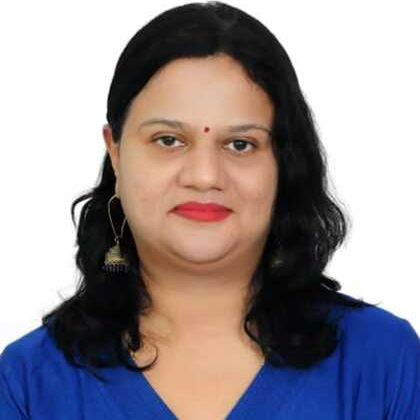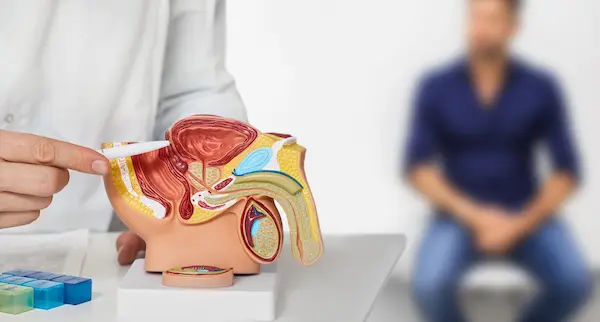Worried About IVF Success Rates? A Realistic Guide
Worried about IVF success rates? This realistic guide explains key factors that influence outcomes, common challenges, and expert-backed tips to improve your chances of a successful pregnancy journey.


Staring at a spreadsheet of clinic success rates can feel overwhelming. You're embarking on one of the most hopeful yet emotionally charged journeys of your life, and it's suddenly reduced to percentages and decimals. It's completely normal to be worried about IVF success rates. This guide is designed to cut through the noise, demystify the statistics, and provide you with a clear, compassionate, and realistic understanding of what these numbers mean for you. We'll explore the key factors that truly matter, how to interpret clinic data intelligently, and how to navigate the emotional rollercoaster, empowering you to have informed conversations with your doctor and approach your treatment with confidence.
What Do "IVF Success Rates" Actually Mean?
Before you can understand what a 50% or 70% success rate means, you need to know what is being measured. The term "IVF success" isn't a single, universal metric. Clinics can report success in different ways, and understanding this distinction is the first step toward managing your expectations.
Clinical Pregnancy Rate vs. Live Birth Rate: The Crucial Difference
This is the most important distinction. A clinical pregnancy rate is confirmed by an ultrasound that shows a gestational sac, typically around 6-7 weeks. This is an early milestone. The live birth rate, however, is the percentage of cycles that result in the birth of a living child. This is the statistic that matters most to intended parents.
Why the gap exists? Not all clinical pregnancies proceed to a live birth. Unfortunately, some end in miscarriage. Therefore, the live birth rate is always lower than the clinical pregnancy rate. When reviewing a clinic's success rates, always prioritise the live birth rate per embryo transfer for your age group. This gives you the most realistic picture of your potential for taking a baby home.
Understanding Cumulative Success Rates for Multiple Cycles
Many people focus on the success rate for a single IVF cycle. However, cumulative success rates provide a more encouraging perspective. This statistic estimates your chance of achieving a live birth after completing multiple IVF cycles (e.g., 2 or 3).
For example, while a woman under 35 might have a ~55% chance of success per cycle, her cumulative chance of success after three cycles can be over 80-90%. This highlights that IVF is often a process, and the first cycle can sometimes be diagnostic, helping doctors refine the protocol for subsequent attempts. Thinking in terms of cumulative success can alleviate the pressure of feeling like everything hinges on one attempt.
The Key Factors That Truly Influence Your Personal IVF Success
National averages are just that—averages. Your personal IVF success probability is influenced by a unique combination of factors. Understanding these empowers you and your doctor to create the most effective treatment plan.
The Single Biggest Predictor: Age and Ovarian Reserve
A woman's age is the most significant factor influencing IVF success. This is primarily due to egg quantity and quality, which decline as we age.
Under 35: Highest success rates, often above 50% live birth per cycle.
35-37: Success rates begin to decline noticeably.
38-40: A more significant decline occurs.
41-42: Success rates are lower, and the use of donor eggs may be discussed.
43 and over: Chances of success with own eggs are low.
Ovarian reserve tests like Anti-Müllerian Hormone (AMH) and Antral Follicle Count (AFC) give a snapshot of your egg supply and help predict how you might respond to ovarian stimulation.
The Role of Sperm Quality and Male Factor Infertility
IVF success isn't just about the egg. Sperm health plays a critical role in fertilisation and embryo development. Issues like low sperm count (oligospermia), poor motility (asthenospermia), or abnormal morphology (teratospermia) can affect outcomes. Techniques like Intracytoplasmic Sperm Injection (ICSI), where a single sperm is injected directly into an egg, can often overcome severe male factor infertility. A detailed semen analysis is a crucial part of the pre-IVF workup. If you're concerned about sperm health, consulting a specialist through a platform like Apollo24|7 can be a convenient first step to discuss results and next steps.
Underlying Medical Conditions (PCOS, Endometriosis, etc.)
Specific conditions can impact implantation and pregnancy success.
PCOS: Can lead to high egg yield but lower quality eggs and a higher risk of ovarian hyperstimulation syndrome (OHSS). Requires a carefully managed stimulation protocol.
Endometriosis: Can create an inflammatory environment that affects egg quality and impedes implantation
Uterine Factors: Issues like fibroids, polyps, or a thin endometrial lining can prevent a healthy embryo from implanting. These are often correctable with minor surgical procedures.
Lifestyle Factors You Can Control
While not as decisive as age, lifestyle choices can create a more favourable environment for success. This includes maintaining a healthy weight, eating a balanced diet rich in antioxidants, managing stress, avoiding smoking and excessive alcohol, and taking recommended supplements like prenatal vitamins. The three months leading up to IVF are particularly important for egg and sperm development.
How to Read Clinic Success Rates Like a Pro
Not all success rate reports are created equal. Knowing where to look and what questions to ask will help you choose a clinic wisely.
Why SART and CVF Data are Your Best Friends
The most reliable data comes from the Society for Assisted Reproductive Technology (SART) in the US or the Human Fertilisation and Embryology Authority (HFEA) in the UK. These organisations require member clinics to report their outcomes in a standardised format. This prevents clinics from "cherry-picking" their best statistics. You can visit the SART website, use their patient predictor tool, and compare clinics based on live birth rates for patients with a similar profile to yours.
Red Flags and Green Flags in Clinic Reporting
Red Flag: A clinic that only promotes "pregnancy rates" without clarifying if they are clinical or live birth rates. Claims of success rates that seem too good to be true (e.g., 90% for all age groups). They may be selectively treating only the best-prognosis patients.
Green Flag: Transparency. A good clinic will openly share its SART report, discuss both national averages and their own stats, and explain how your personal factors influence your chances. Willingness to discuss all options, including when third-party reproduction (donor eggs/sperm) or alternative paths might be appropriate.
Consult Top Specialists Here
Beyond the Numbers: Realistic Expectations and Emotional Resilience
IVF is as much an emotional journey as a medical one. Preparing your mind is just as important as preparing your body.
The Statistical Reality of Multiple Cycles
Internalising the concept of cumulative success rates can be a powerful coping mechanism. Viewing IVF as a potential multi-cycle pathway, rather than a single, high-stakes event, can reduce the devastating impact of a negative result. It allows you to see a failed cycle not as a final outcome, but as a learning step that provides valuable information to improve the next protocol.
Coping with the Anxiety of the Two-Week Wait
The period between embryo transfer and the pregnancy test (the "two-week wait") is notoriously stressful. Strategies to manage this anxiety include:
Planning Distractions: Schedule light activities, meet friends, watch movies.
Mindfulness and Meditation: Apps can guide you through techniques to stay grounded.
Setting Boundaries: Decide in advance how and when you will share results
Seeking Support: Lean on your partner, a therapist specialising in infertility, or support groups. The emotional toll is real, and professional support can be invaluable.
Actionable Steps to Potentially Improve Your Odds
While there are no guarantees, there are evidence-based steps you can take to optimise your body for the IVF process.
Pre-IVF Optimisation: The 3-Month Preparation Window
The 90 days before an IVF cycle are critical for egg and sperm development. This is the time to:
Nutrition: Focus on a Mediterranean-style diet (healthy fats, lean proteins, whole grains, vegetables).
Supplements: Discuss with your doctor about CoQ10 (for egg and sperm mitochondrial health), Vitamin D, and high-quality prenatal vitamins.
Lifestyle: Achieve a healthy BMI, incorporate moderate exercise, and prioritise sleep.
Diagnostics: Ensure all necessary tests, like a hysteroscopy or semen analysis, are complete. Apollo 24|7 offers convenient home collection for essential tests like AMH or semen analysis, making preliminary assessments easier.
The Importance of a Personalised Treatment Plan
A one-size-fits-all approach rarely works in IVF. Your protocol should be tailored to your unique diagnosis, age, and previous response (if any). Ask your doctor why they are recommending a specific protocol. A good plan considers the type of medication, dosage, timing of trigger shot, whether to do a fresh or frozen transfer, and if genetic testing of embryos (PGT-A) is appropriate for your situation.
Conclusion
Being worried about IVF success rates is a natural part of the fertility journey. However, by moving beyond the fear of generic statistics and focusing on the factors you can understand and influence, you reclaim a sense of agency. Remember, the national averages are a starting point, not your destiny. Your personal journey is unique. The key is to partner with a clinic you trust, ask informed questions, and prepare both physically and emotionally for the path ahead. While the numbers provide a framework, your resilience and hope are the driving forces. If you are feeling overwhelmed by the data or your specific diagnosis, remember that you don't have to navigate it alone. Consider consulting a fertility specialist to discuss your personal circumstances and create a plan tailored just for you.
Consult Top Specialists Here
Consult Top Specialists Here

Dr. Sai Lakshmi Daayana
Gynaecological Oncologist
18 Years • MBBS, MRCOG
Hyderabad
Apollo Hospitals Jubilee Hills, Hyderabad
(225+ Patients)

Dr. Rupam Manna
Radiation Specialist Oncologist
4 Years • MBBS MD(RADIO THERAPY)
Barasat
Diab-Eat-Ease, Barasat

Dr. Sreeparna Roy
Obstetrician and Gynaecologist
8 Years • MBBS , MS (OBSTETRICS & GYNAECOLOGY), Fellowship in Infertility, Endoscopy & Ultrasonography), Fellowship in Laparoscopy & Hysteroscopy,DRM
Kolkata
Dr Utsa Basu Clinic, Kolkata

Dr. Revathi S Rajan
Obstetrician and Gynaecologist
24 Years • MBBS, DGO, DNB.FFMM
Bengaluru
Apollo Clinic, JP nagar, Bengaluru
Dr. Navin Srinivasan
Gynaecological Oncologist
9 Years • MBBS, MS DNB(OBS-GYNAE), MCH (GYNAE ONCOLOGY)
Bengaluru
Apollo Clinic Mahadevapura, Bengaluru




